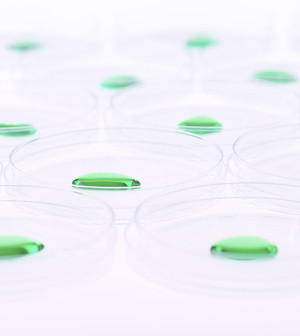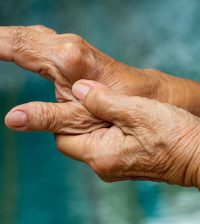- Some OB/GYNS Stay in States With Abortion Bans, Despite Legal Risks
- Teen Cannabis Use Rises in Canada After Edibles Are Legalized
- Federal Prosecutor Questions Medical Journals Over Alleged Bias
- Antibiotics Might Increase Risk of Childhood Asthma, Allergies
- Muscle Quality Could Be Key To Successful Hip Replacement
- Early Menopause Might Mean Greater Age-Related Brain Decline
- Microplastics Could Be Contributing To Clogged Arteries
- Psilocybin Use Dramatically Increasing In U.S.
- Mood Disorders Have Increased Among Kids, Teens
- Prevalence of Depression Increased Over Last Decade
Does Legalizing Pot Spur Kids to Try It?

States that legalize recreational marijuana use may be sending a message to teens that pot is harmless, a new study suggests.
Fewer teenagers in Washington and Colorado saw marijuana as risky to their health following approval of recreational use by voters in those states, researchers report.
Washington also saw an increase in recreational pot use among 8th and 10th graders following legalization there.
“With legalization, marijuana use became less stigmatized and adolescents were more likely to use it,” said study author Magdalena Cerda. She is an epidemiologist with the University of California, Davis, Violence Prevention Research Program.
However, the study did not prove that legalizing recreational use of marijuana caused teens to find it less harmful or be more likely to try it.
In 2012, Washington and Colorado became the first two states to legalize recreational marijuana use. Six states — Alaska, Oregon, California, Maine, Massachusetts and Nevada — along with Washington, D.C., have since followed suit.
Cerda and her colleagues examined federal survey data to determine whether legalization had any impact on marijuana use and perceptions of risk among 8th, 10th and 12th graders in Washington and Colorado.
The U.S. National Institute on Drug Abuse funds the annual survey, which questions teenagers about their behaviors, attitudes and values. Nearly 254,000 Colorado and Washington state students participated in the survey during the period in question.
Perceptions of marijuana’s harmfulness decreased dramatically in Washington following legalization, falling by 14 percent and 16 percent among 8th and 10th graders.
About 61 percent of 8th graders and 47 percent of 10th graders in Washington saw marijuana as greatly or moderately risky to health in 2013-2015, compared with 75 percent and 63 percent in 2010-2012, the findings showed.
Washington teens’ pot use increased during the same period, by 2 percent for 8th graders and 4 percent for 10th graders, researchers found. By 2013-2015, about 8 percent of 8th graders and 20 percent of 10th graders said they’d used marijuana within the past month.
The effects of legalization were more muted in Colorado.
Teens in Colorado also experienced a decrease in perceived health risks surrounding marijuana, but it was somewhat less dramatic — about 3 percent for 8th graders and 11 percent for 10th graders, according to the report.
But actual pot use did not change among 8th graders in Colorado, with about 9 percent saying they’d used marijuana within the past month. Use actually declined among 10th graders in Colorado, falling from 17 percent to 13.5 percent.
The findings were published online Dec. 27 in the journal JAMA Pediatrics.
Cerda said the results from Colorado might have been different because that state more actively embraced marijuana use back when it had only been approved for medical purposes.
“There was a more robust commercialization effort around medical marijuana prior to recreational marijuana being legalized,” Cerda said. “That might have contributed to the fact that even before marijuana was legalized, the use was already quite high and the perceived harm was quite low.”
NORML advisory board member Mitch Earleywine noted that even in states that did not legalize recreational use, teens’ perceptions of marijuana’s harmfulness decreased by 5 percent and 7 percent among 8th and 10th graders, according to results from the new study. NORML advocates for reform of marijuana laws.
Marijuana use decreased by about 1 percent for both grades in non-legalization states during the same period, the researchers said.
“The changes in use seem to appear small and inconsistent, particularly in light of comparable changes in states where prohibition still reigns,” said Earleywine, a professor of psychology at the State University of New York at Albany. “We don’t need to waste law enforcement time or court resources to end teen consumption,” he added.
“I’d like to encourage everyone to continue to send the empirically supported message that recreational cannabis use early in life is bad for brain development, just like binge drinking, restrictive dieting and head injury,” Earleywine continued. “Let’s use tax dollars generated from the new market to help spread the word.”
Cerda said that studies have shown that kids who try marijuana at an earlier age are more at risk to become lifelong chronic users. Teens’ brains are still developing, and the chemicals in pot can alter that development in ways that leave them less intelligent and more vulnerable to addiction, she added.
Dr. Scott Krakower is assistant unit chief of psychiatry for Zucker Hillside Hospital in New Hyde Park, N.Y. He said, “As long as you have at least one of the states showing an increased rate among younger-age students, there are concerns those students are going to move up the ladder and wind up using more when they hit a later age.”
Recreational legalization can increase the amount of pot available to kids, and at the same time give the perception that there’s nothing wrong with using marijuana, Krakower noted.
“With parental attitudes being more permissive about the agent, children tend to follow their parents and what their parents do,” Krakower said. “If parental perception of harm is decreased, children will follow the example of their parents. Combine that with a legalized market where you can readily buy it and it will be easier to obtain, and children will be more likely to use it.”
More information
For more on effects of marijuana on teens, visit the U.S. National Institute on Drug Abuse.
Source: HealthDay
Copyright © 2025 HealthDay. All rights reserved.








